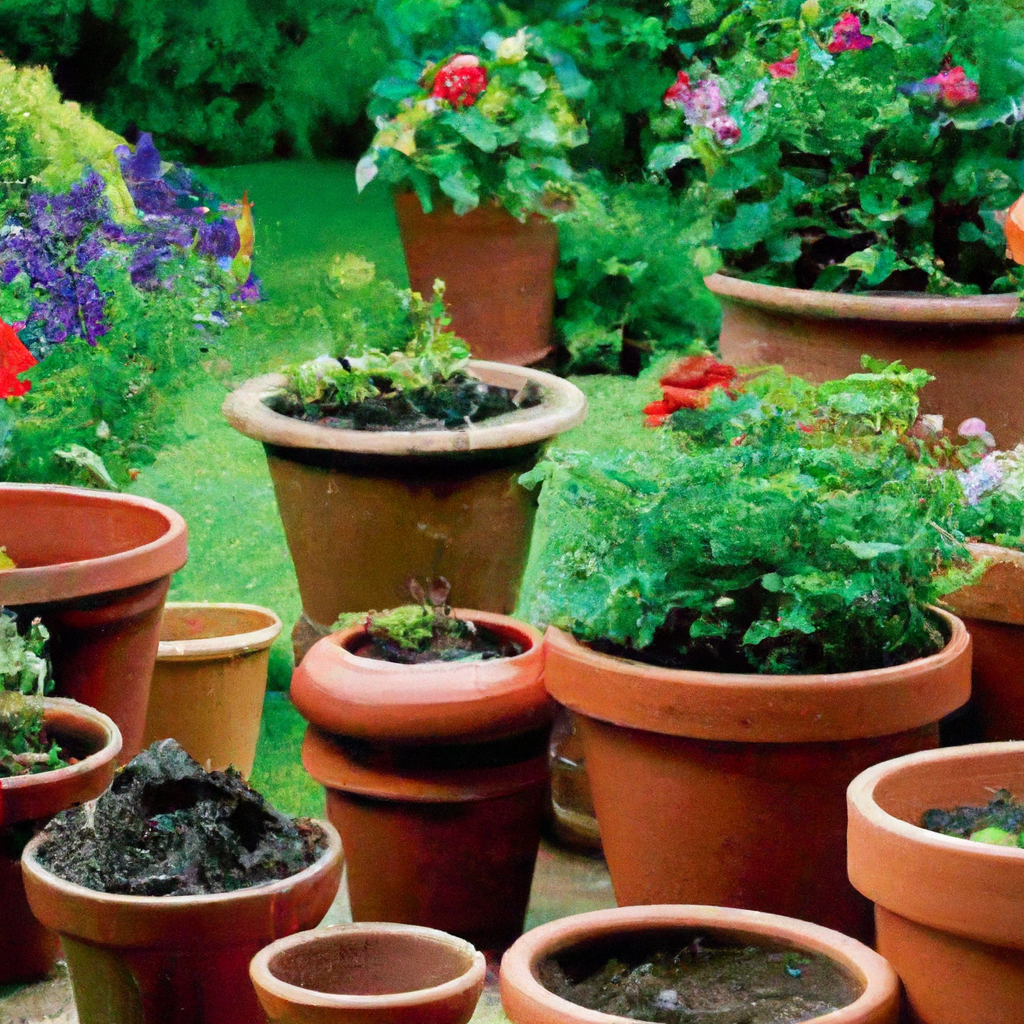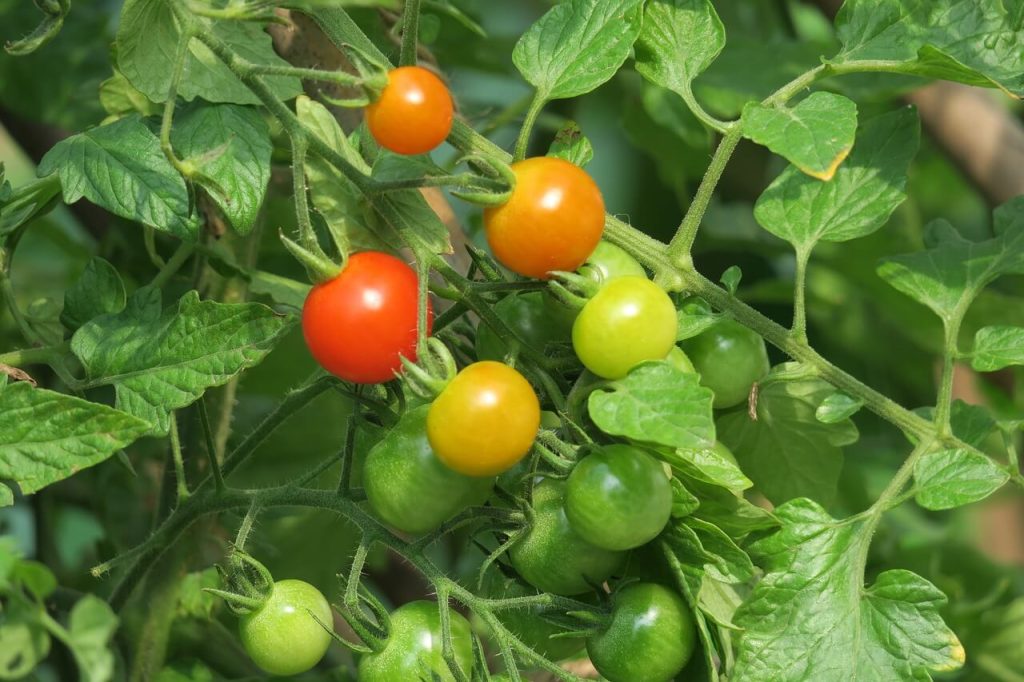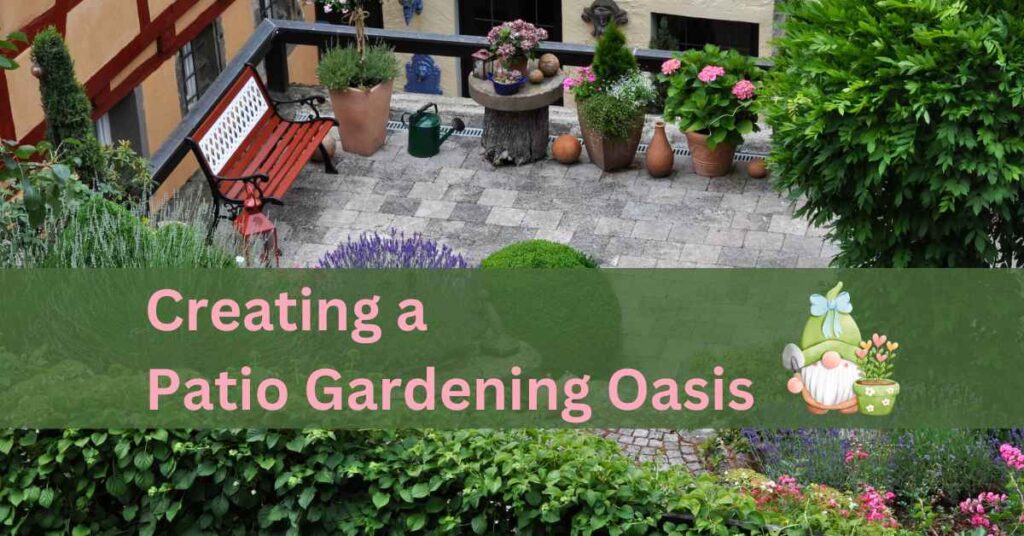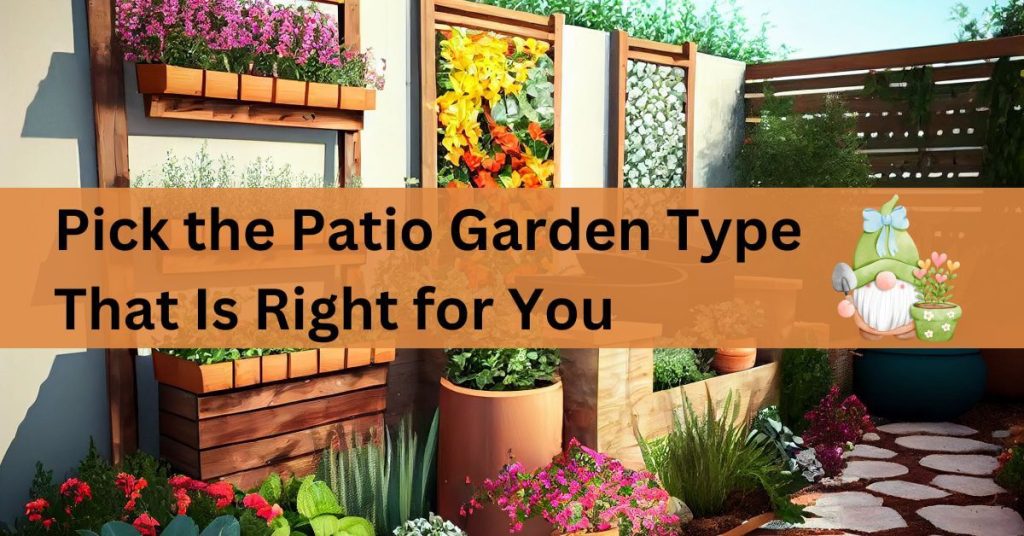
If you’ve ever dreamed of having a thriving garden but don’t have the luxury of a big backyard, fear not! You can still grow your own food on your deck or patio. In fact, there are plenty of advantages to growing food on your patio.
From the convenience of having fresh herbs just steps away from your kitchen to the ability to control pests and weeds more effectively, growing food on your deck or patio can be a rewarding and productive experience. Plus, with the right planning and care, you can grow a wide variety of fruits, vegetables, and herbs in containers. So get ready to enjoy the taste of homegrown produce with these helpful tips for creating your own deck or patio garden.
Why Grow Edibles on Your Patio or Deck
Growing your own food doesn’t have to be limited to large backyard gardens. Even if you live in a high-rise apartment, you can still enjoy the satisfaction of homegrown vegetables and herbs by utilizing your patio or deck. In fact, there are several advantages to growing edibles in containers on an elevated space. Here are a few reasons why you should consider growing edibles on your patio or deck:
More light
If you live in a region with limited sunlight, such as the Pacific Northwest, growing your plants on a patio or deck can be a great solution. An elevated space receives more sunlight than ground-level gardens, giving your plants the light they need to thrive.
Fewer pests
Pests like slugs, snails, rats, and squirrels are less likely to find your garden if it’s on a deck, especially if you’re in a high-rise building. This means less damage to your crops and fewer frustrations dealing with pests.
Fewer weeds
By using a potting medium that is free of weed seeds, you can greatly reduce the number of weeds in your garden. Unlike backyard gardens, container gardens are less susceptible to weed growth, making maintenance much easier for you.
Less water use
Although container-grown vegetables generally require more frequent watering than those grown in raised beds, it is often easier to gauge the amount of water needed for container plants. This can actually help in conserving water in the long run, while still providing your plants with the hydration they need.
Easy access
Having an edible garden on your patio or deck provides easy access to fresh herbs and vegetables, right outside your kitchen. Whether you primarily grow your crops in raised beds or containers, keeping a few containers of herbs on the deck allows you to conveniently step outside and snip some fresh chives or basil for your meals. It truly enhances the everyday cooking experience.
How to Plan Your Patio or Deck Garden
Now that you understand the benefits of growing edibles on your patio or deck, let’s dive into the steps you need to take to plan and set up your garden:
Get good containers
When it comes to container gardening, the size of the container matters. Larger containers retain water longer and allow plants to develop stronger root systems. Consider using upcycled materials like wine boxes or food storage totes with drainage holes drilled in the bottom if you’re on a budget.
If you prefer a more elegant solution, cedar or fiberglass planters are durable options that will last for years. Keep in mind that ceramic or terra-cotta planters can dry out quickly and may crack in freezing temperatures. Make sure your containers have adequate drainage holes to prevent waterlogging.
Get a good growing medium
Container gardens should always be planted in a specially designed potting mix. Unlike regular garden soil, potting mix is lightweight and blended for moisture retention.
Look for high-quality organic potting mix without peat moss, as peat moss is a nonrenewable resource. Vegetables are heavy feeders, so add a sprinkling of granulated slow-release organic fertilizer at the time of planting, and follow up with monthly additions of organic liquid fertilizer designed for vegetables.
Protect plants from the elements
High-rise gardens are exposed to factors like wind, heavy rain, and heat. Utilize existing structures like roof overhangs, patio umbrellas, or glass railings to provide protection for your plants.
Movable planters can also be advantageous, as they can be relocated to different parts of your patio or deck as needed. For storm protection, consider using clear plastic clamshell containers from commercial salad mixes or construct mini garden hoops from sturdy wire and clear plastic.

Start worm composting
Consider setting up a worm compost bin to create your own fertilizer. Worm composting is a simple and non-smelly way to recycle kitchen scraps and produce high-quality compost. It works well even in an apartment and provides both worm compost and “worm tea,” which is the liquid produced by the composting process. Adding this organic fertilizer to your plants will keep them healthy and thriving.
What to Grow on the Deck or Patio
Although you can grow almost any vegetable or fruit on a patio or deck, certain plants are particularly well-suited for container gardening. Here are a few options:
Tomatoes
Tomatoes are a classic choice for container gardens. They thrive in the heat and can be grown in large containers that are at least 18 inches deep. Make sure to provide them with a trellis for support as they grow.

Potatoes
Believe it or not, potatoes can be grown beautifully in containers. Unlike field-grown potatoes, container-grown potatoes are easier to harvest. Simply tip the container onto a tarp when you’re ready, and harvest your potatoes without the hassle of digging.
Herbs
Herbs are an ideal choice for patio or deck gardens. By placing them close to your kitchen, you’ll always be inspired to step outside and grab a few fresh herbs for your meals. Herbs do well in containers and appreciate the added sun and heat of a deck. Plus, you can prevent invasive herbs like mint from spreading by containing them in pots.
Salad greens
Salad greens, with their small root systems, thrive in container gardens. Sow a small patch of seeds every week to ensure a continuous supply of fresh salad greens. Harvest the leaves as soon as they reach maturity. By clipping them with scissors, you can often get a second or even third harvest from one sowing.
Things to Consider
While growing edibles on your patio or deck is a rewarding experience, there are a few things to keep in mind to ensure success:
Avoid overcrowding
One of the most common mistakes in container gardening is overcrowding. Unlike plants in raised beds, container-grown plants have limited space for their roots to spread out. Give each plant enough space, especially for larger crops like tomatoes, kale, and cucumbers. Ideally, each large pot should accommodate just one plant and be at least 18 inches deep. When sowing seeds, practice thinning to ensure proper spacing.
Water regularly
Container plants require more frequent watering than those in raised beds. Keep your potting mix moist, but not soggy. The top layer can dry out between watering, but make sure the soil underneath remains moist. Water in the early morning to prevent excessive evaporation and to give your plants enough hydration before the midday sun heats up.
Maintain your soil
Vegetables are heavy feeders and require regular fertilization. Add slow-release organic fertilizer at the time of planting and supplement with monthly additions of organic liquid fertilizer specifically designed for vegetables. This will ensure that your plants receive the nutrients they need to grow strong and productive.
FAQs – Growing Edibles on Your Patio or Deck
1. Why should I consider growing edibles on my patio or deck?
Growing edibles on your patio or deck allows you to enjoy the satisfaction of homegrown vegetables and herbs, even if you have limited space. There are several advantages, including more light, fewer pests, fewer weeds, less water use, and easy access to fresh herbs and vegetables just outside your kitchen.
2. What are the advantages of growing on an elevated space like a patio or deck?
Elevated spaces receive more sunlight, making it ideal for plant growth, especially in regions with limited sunlight. Additionally, pests like slugs, snails, rats, and squirrels are less likely to find your garden, and container gardens are less susceptible to weed growth, making maintenance easier. You can also gauge and conserve water more effectively in container gardens, and you have easy access to fresh produce.
3. What containers should I use for my patio or deck garden?
The size of the container matters. Larger containers retain water longer and allow for stronger root systems. Consider using upcycled materials like wine boxes or food storage totes with drainage holes for a budget-friendly option. Cedar or fiberglass planters are durable choices, while ceramic or terra-cotta planters may dry out quickly. Ensure all containers have adequate drainage holes to prevent waterlogging.
4. What type of growing medium should I use for container gardening?
Container gardens should be planted in a specially designed potting mix, which is lightweight and blended for moisture retention. Look for high-quality organic potting mix without peat moss. You should also add slow-release organic fertilizer at the time of planting and provide monthly additions of organic liquid fertilizer designed for vegetables.
5. How can I protect my plants from the elements on my patio or deck?
High-rise gardens are exposed to wind, heavy rain, and heat. Utilize existing structures like roof overhangs, patio umbrellas, or glass railings for protection. Movable planters can be advantageous, and you can consider clear plastic clamshell containers or mini garden hoops for storm protection.
6. Should I consider worm composting for my patio or deck garden?
Setting up a worm compost bin is a great way to create your own fertilizer. It’s a simple and non-smelly way to recycle kitchen scraps and produce high-quality compost. Worm compost and “worm tea” can be added to your plants to keep them healthy and thriving.
7. What are some plants that are well-suited for patio or deck gardens?
While you can grow a variety of vegetables and fruits, some excellent choices for container gardening include tomatoes, potatoes, herbs, and salad greens. Tomatoes thrive in large containers, while container-grown potatoes are easy to harvest. Herbs do well in containers, and salad greens with small root systems thrive in this environment.
8. What are some essential tips for successful patio or deck gardening?
To ensure success, avoid overcrowding your containers, water regularly to keep the potting mix moist, and maintain your soil with regular fertilization. Give each plant enough space, especially for larger crops, and ensure proper spacing when sowing seeds. Water in the early morning, and use slow-release organic fertilizer and organic liquid fertilizer designed for vegetables to provide essential nutrients.
Conclusion
By following these tips and guidelines, you can successfully grow a wide variety of edibles on your patio or deck. Get creative with your containers, choose the right plants for your space, and provide proper care for your garden. Soon enough, you’ll be enjoying the fruits of your labor, right outside your door.


